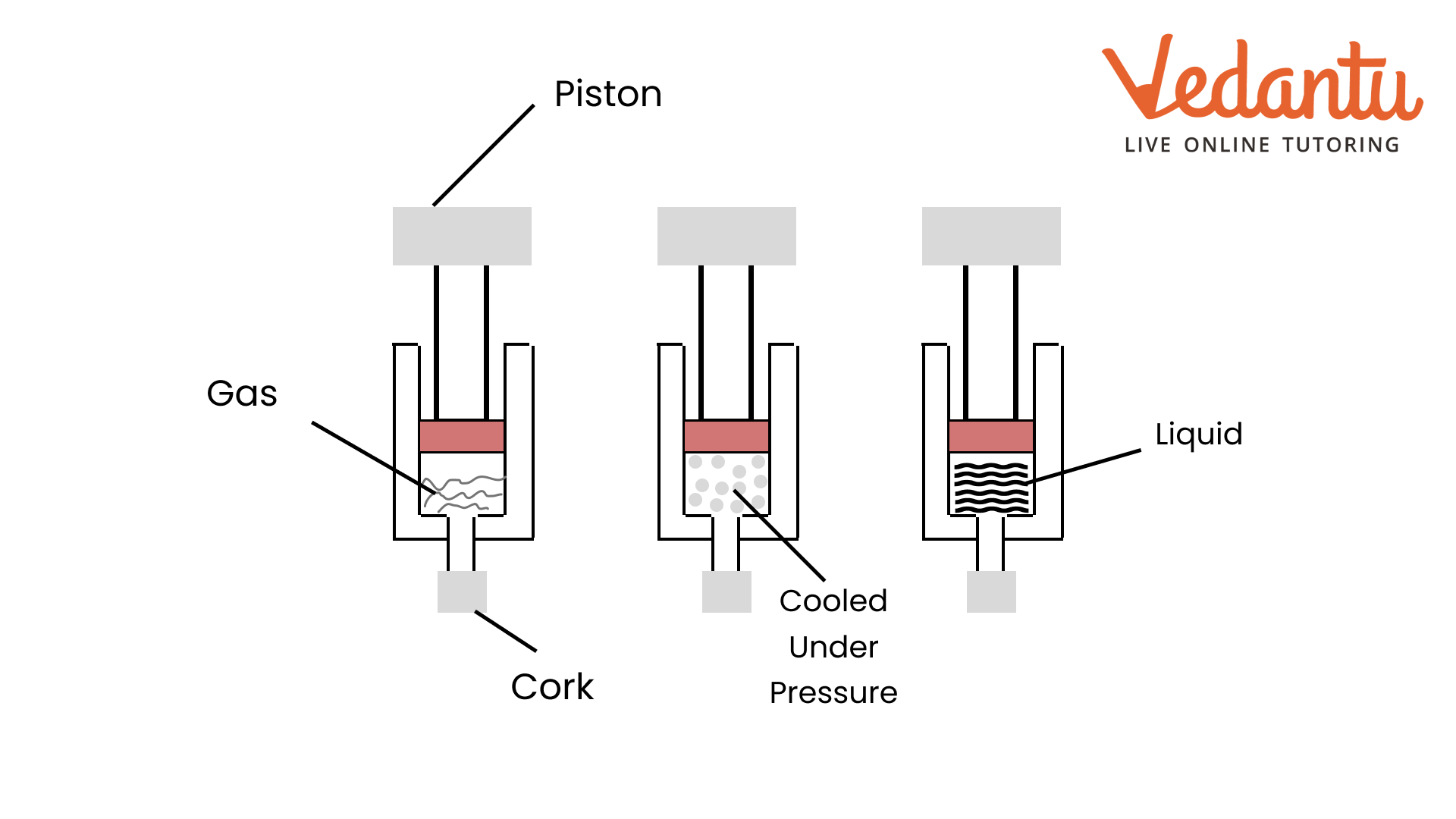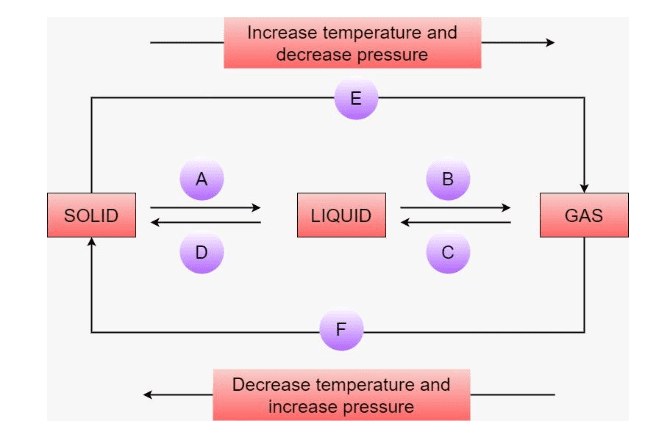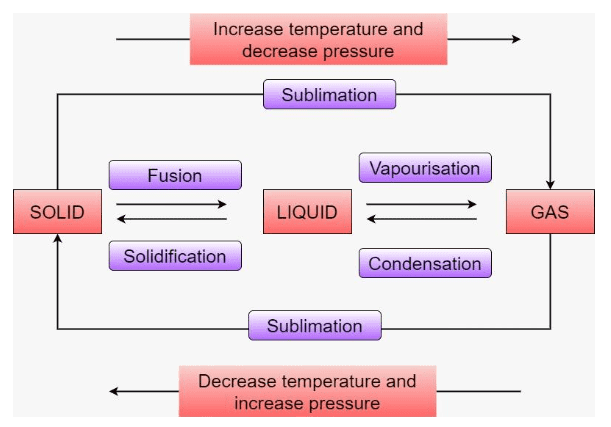NCERT Science Class 9 Chapter 1 Question Answer - Matter in Our Surroundings FREE PDF Download
FAQs on NCERT Solutions for Class 9 Science Chapter 1 Matters In Our Surroundings
1. What are the different characteristics of state of matter explained in NCERT solutions class 9 Science chapter 1?
The different characteristics as elaborated in Class 9 Science Chapter 1 Questions and Answers are based on six parameters - (1) Shape, (2) Volume, (3) Rigidity or Fluidity, (4) Intermolecular force, (5) Intermolecular space, and (6) Compressibility.
A few of the properties listed in Matter in Our Surroundings Class 9 NCERT answers suggest that solids have a set form, volume, and are rigid, whereas liquids have no fixed shape or volume and are less rigid than solids. Gas, on the other hand, has no definite shape or volume and is not hard.
2. Which are the chapters included in Class 9 Science as per the NCERT Science Book?
There are altogether fifteen chapters included in CBSE class 9 Science – (1) Matter in Our Surroundings, (2) Is Matter Around Us Pure, (3) Atoms and Molecules, (4) Structure of Atom, (5) The Fundamental Unit of Life, (6) Tissues, (7) Diversity in Living Organisms, (8) Motion, (9) Force and Laws of Motion, (10) Gravitation, (11) Work and Energy, (12) Sound, (13) Why do We Fall Ill, (14) Natural Resources, (15) Improvement in Food Resources.
3. Can NCERT Solutions be an effective way to prepare Science Class 9 Chapter 1?
Yes, NCERT Solutions will help the studnets to prepare for chapter 1 of Class 9 pretty well. While there can be a multitude of ways to prepare Ch 1 Class 9 Science, it is only when such preparation is done in a systematic manner, can an optimal output be gained. It is advised that instead of starting with a topic in Class 9 Chapter 1 solution of one’s preference, proceed according to the flow of the chapter.
4. How many questions are present in each exercise of NCERT Solutions for Class 9 Science Chapter 1?
There are five exercises in the NCERT Solutions for Class 9 Science Chapter 1. In Exercise 1, there are four questions. In Exercise 2, there are four questions. Exercise 3 also consists of four questions. In Exercise 4, there are four questions. Lastly, the NCERT exercise has nine questions. All of these questions are provided along with their solutions in the NCERT Solutions for Class 9 Science Chapter 1.
5. Are the NCERT Solutions for Class 9 Science Chapter 1 sufficient for the exam preparation?
Yes. To do well in the test, students must study and prepare through self-study in addition to what is given in school. Students must use the best study resources provided on Vedantu for self-study. Students should refer to NCERT Answers for Class 9 Science Chapter 1 and others when studying for the Class 9 Science test. They are developed by qualified teachers and are simple to grasp.
6. What is the matter in our surroundings?
Matter in our surroundings is the first topic covered in NCERT Class 9 Science Chapter 1. In this chapter, students learn what matter is and which entities can not be considered as matter. The five basic elements that constitute matters in our surroundings are fire, earth, sky, water and air. The building blocks of matter are very small particles that can only be seen under a microscope.
7. Write in short answer format what is matter according to the syllabus of Class 9.
Matter is defined as everything that fills space and has mass. Matter may be perceived by humans through their senses. Water, earth, fire, sky, and air are components that make up matter. It is made up of microscopic particles that can only be seen under a microscope. These are the fundamental building components of matter. Light, heat, electricity, and magnetism are not considered matter since they do not occupy space or have mass.
8. How to download the NCERT Solutions Class 9 Science Chapter 1?
Students can use NCERT Solutions for Class 9 Science Chapter 1 to download the NCERT Solutions Class 9 Science Chapter 1 from Vedantu (vedantu.com). These solutions contain the answers to all the questions from Chapter 1 of the Class 9 Science NCERT textbook in a concise and structured manner. These are available free of cost on Vedantu (vedantu.com). Students can download these using the Vedantu app as well. By going through the solutions, students can learn how to write their answers in the exam. Apart from the solutions, students can also find other study material on Vedantu, including important questions, revision notes and previous year question papers.
9. What is the topic of Class 9 science Chapter 1?
The topics covered in Science Chapter 1 Class 9 are:
Physical Nature of Matter
Characteristics of Particles of Matter
States of Matter
Can Matter Change its State?
Evaporation
10. How many questions are present in each NCERT Solutions for Class 9 Science Chapter 1 exercise?
The number of questions present in each exercise of NCERT Solutions for Class 9 Science Chapter 1 is –
Intext Excercise 1 – 4 Questions
Intext Exercise 2 – 4 Questions
Intext Exercise 3– 4 Questions
Intext Exercise 4 – 5 Questions
NCERT Chapter Exercise – 9 Questions

































